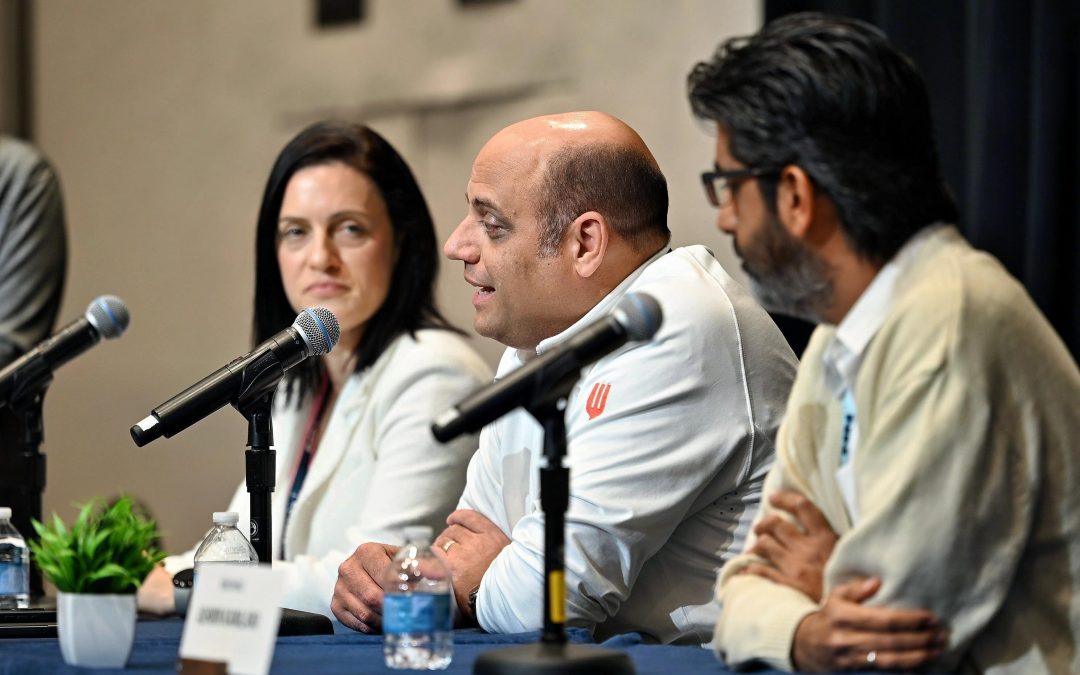Third-party delivery apps can be challenging for restaurants, but ‘they are essential today for restaurants to survive,’ said Craveworthy Brands founder and CEO Gregg Majewski.
The markups required to cover costs of advertising on apps such as Uber Eats and DoorDash can be 20 to 25 percent, he said—which is a lot to ask of customers who are already paying delivery and service fees, plus tip. To mitigate those upcharges for consumers, Craveworthy eats the cost of marketing.
“I can’t deliver the product for the cost that they charge me. That’s 6 percent or 7 percent above advertising. I can’t deliver that,” Majewski said. “Being a delivery expert in my past, it’s impossible to deliver the product at 6 percent of sales. So, we no longer pass that cost on to our consumer. We just cover the cost of the marketing that we’re spending or the marketing dollars that the third-parties have put on us.”
Majewski was one of three panelists in a workshop titled ‘How Leading Brands Are Making Money with 3PD,’ moderated by Food On Demand Managing Editor Bernadette Heier, at the Restaurant Finance & Development Conference on November 11.
Majewski, the former CEO of Jimmy John’s, founded Craveworthy Brands last year and now has 11 brick-and-mortar brands and four virtual brands in its portfolio, including Dirty Dough, Genghis Grill and Soom Soom.

Gregg Majewski, Craveworthy Brands CEO, Founder
Inflation rates are “completely out of control,” Majewski said, and consumers are more conscious of their spending habits.
“I don’t know a way that we can go ahead and charge 20-to-25 percent markups, like some restaurants do, to our customer and think they’re going to come back,” he said.
By increasing third-party menu prices by just 12 percent instead, Majewski said the increase in off-premises sales more than makes up for the loss in markups.
“We’re up almost 42 percent on third party since we took this discount at only 12 percent,” he said. “I’m now cheap. I’m not cheap, but I’m cheap to the consumer compared to my competitors.”
Majewski noticed inflation rates were heavily impacting consumers when he looked at his own restaurant bill about two years ago and said to himself: “Oh, shit.”
He told his team he couldn’t let his customers have the same thoughts.

From left: Bernadette Heier, Food On Demand; Sara Senatore, Bank of America; Gregg Majewski, Craveworthy Brands; and Ashwin Kamlani, Juicer, on a third-party delivery pricing panel at the Restaurant Finance & Development Conference November 11.
“We came up with what we called our value approach, without calling it value,” he said. “We introduced a new segment where we priced down our menu significantly. … I could afford to take it in the shorts and have negative comps. Basically, I wanted to cry, but my transactions started to go up. I’m now positive transaction and positive content because I reduced price point over 25 percent and consumers are responding to it.”
That was done without increasing labor, which is a positive in a time when labor costs are rising and labor supply is constrained.
When California implemented its $20 minimum wage for fast food workers, “We immediately saw fast food restaurant demand retrench,” said Sara Senatore of Bank of America. “Even within segments, we’re seeing the companies willing to take it on the chin and reduce prices are absolutely taking traffic share.”


